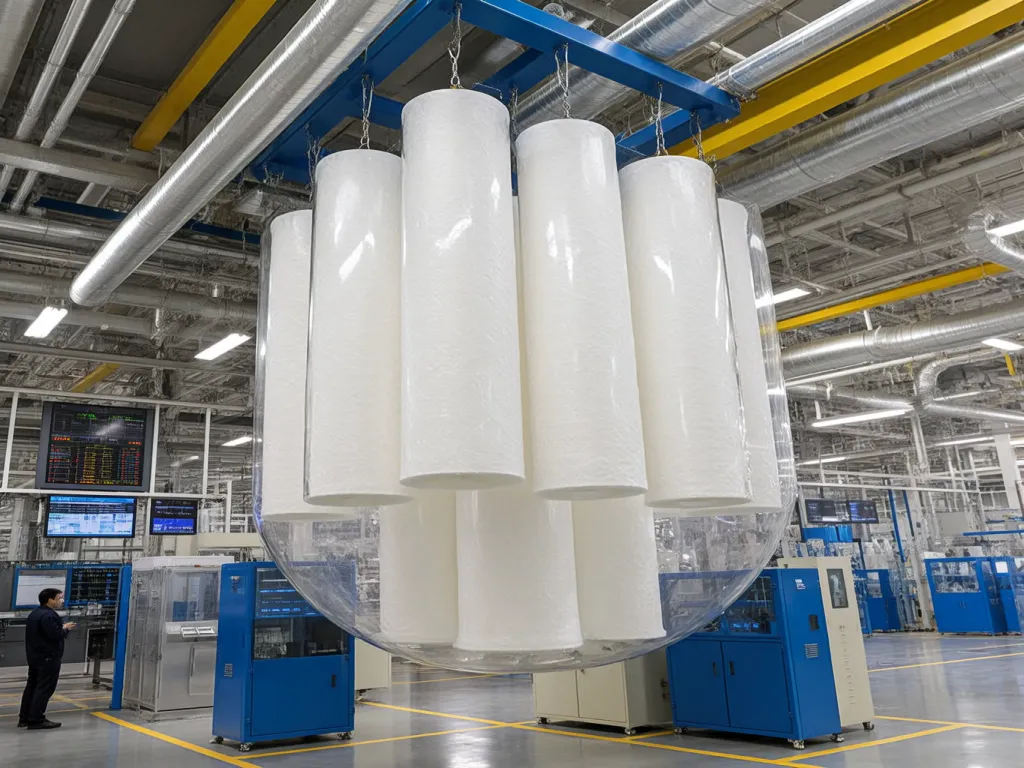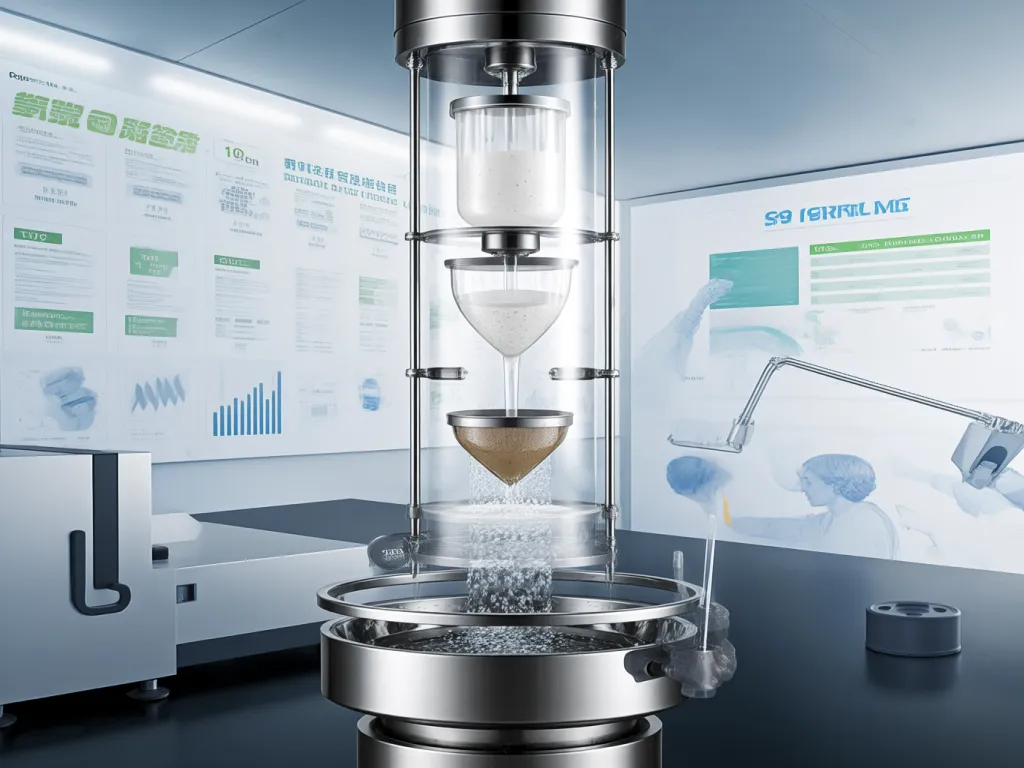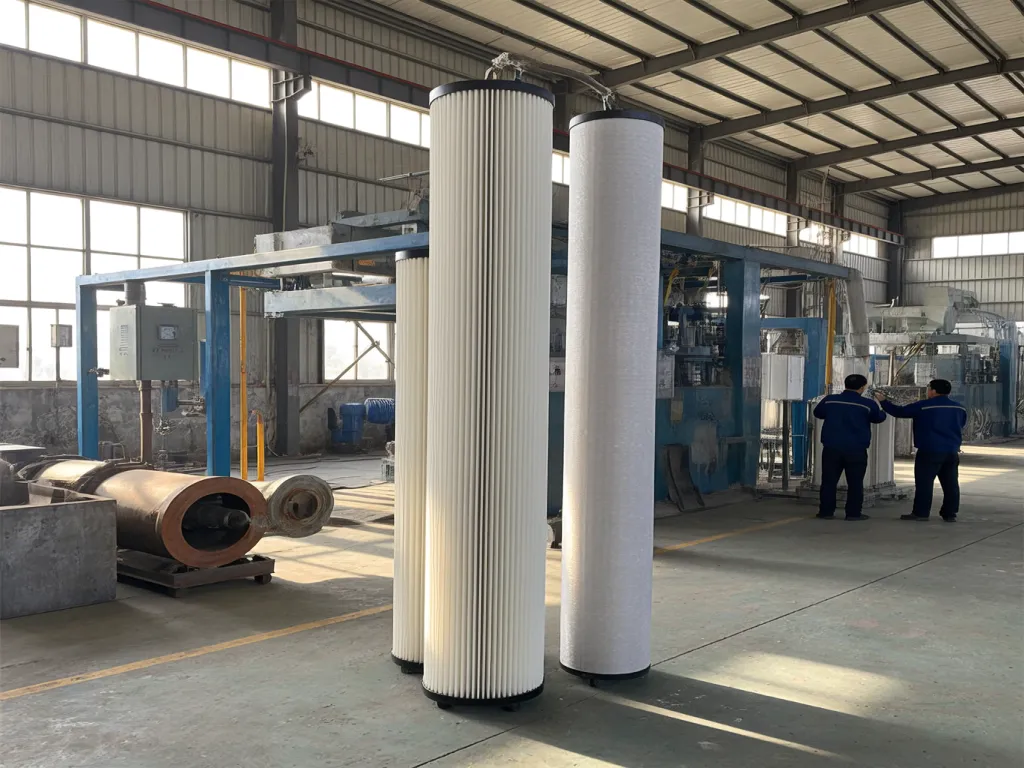Durable Polyester Felt Filter Bags: Balance Temp & Precision

For industrial filtration managers and engineers, selecting the right filter bag is a balancing act. You need materials that withstand extreme temperatures without compromising filtration accuracy—all while keeping long-term costs in check. Enter the hero of modern filtration: the high durability polyester felt filter bag. But how do you choose one that hits the sweet spot between thermal stability and particle capture efficiency? Let’s dive into the science of selecting filter bags that work smarter, not harder.

Material Temperature Resistance Analysis: Exploring the Stability of High Durability Polyester Felt Filter Bags at Different Temperatures and How to Select Temperature Resistance Grades Based on Working Conditions
When it comes to industrial filtration, the temperature resistance of filter bags is a critical factor that can’t be overlooked. As a purchasing manager or technical engineer, you’re well aware that different working conditions demand different temperature – resistant capabilities from your polyester felt filter bags. So, how exactly does temperature affect the stability of high – durability polyester felt filter bags, and how can you choose the right temperature resistance grade?
Let’s start by understanding the nature of polyester felt. Polyester is a synthetic fiber known for its excellent strength and durability. However, like any material, it has its limits when it comes to temperature. Generally, standard polyester felt filter bags can withstand continuous operating temperatures up to around 130°C (266°F). At this temperature range, the polyester fibers maintain their structural integrity, ensuring consistent filtration performance. For those seeking materials with enhanced temperature resistance, you may also want to explore woven fiberglass dust filter felt cloth, which offers a high-efficiency solution for industrial dust collection.
But what happens when the working environment exceeds this temperature? Well, as the temperature rises, the polyester fibers start to undergo physical and chemical changes. At temperatures above 130°C, the fibers may begin to soften. This softening can lead to a loss of shape and a decrease in the filter bag’s ability to hold its form, which in turn affects the filtration efficiency. In extreme cases, if the temperature gets too high, the polyester can even melt, causing complete failure of the filter bag.
On the other hand, if the working temperature is too low, there can also be issues. Although polyester is relatively stable at low temperatures, extremely cold conditions can make the fibers more brittle. This brittleness increases the risk of the filter bag cracking or breaking during operation, especially when subjected to mechanical stress such as vibration or pressure changes.
Now, how do you select the right temperature resistance grade for your specific working conditions? The first step is to accurately measure the maximum and minimum temperatures in your filtration system. Consider not only the normal operating temperature but also any potential temperature spikes that may occur during start – up, shutdown, or abnormal operating conditions.
For example, if your industrial process involves high – temperature gases or liquids, you’ll need a polyester felt filter bag with a higher temperature resistance grade. Some specialized polyester felt filter bags are treated or blended with other materials to enhance their temperature resistance. These can withstand temperatures up to 200°C (392°F) or even higher in some cases. On the contrary, if your application is in a relatively low – temperature environment, a standard polyester felt filter bag may suffice, saving you on costs without compromising performance.
Another factor to consider is the duration of exposure to high or low temperatures. If your filter bag will be exposed to elevated temperatures for extended periods, you’ll need a more robust temperature – resistant option compared to a situation where the high – temperature exposure is only intermittent.
In addition, think about the overall system design. Some filtration systems may have cooling or heating mechanisms in place to regulate the temperature. Understanding how these mechanisms interact with the filter bag can help you make a more informed decision about the temperature resistance grade you need.
Let me ask you this: Have you ever experienced filter bag failures due to incorrect temperature resistance selection? It’s a common issue that can lead to costly downtime and reduced productivity. By taking the time to analyze your working conditions and select the right high – durability polyester felt filter bag with the appropriate temperature resistance, you can avoid these problems and ensure smooth operation of your industrial filtration system.

Filtration Accuracy Selection Strategy: Analyzing the Impact on Filtration Performance and Balancing Precision with Cost
When it comes to selecting the right high durability polyester felt filter bag, filtration accuracy is a critical factor that directly influences both the efficiency of your industrial processes and the long-term costs of operation. But how do you strike the perfect balance between precision and cost? Let’s break this down in a way that makes sense for your bottom line.
Understanding Filtration Accuracy and Its Impact
Filtration accuracy refers to the size of particles a filter bag can effectively capture. Measured in microns (µm), this metric determines whether your filter will trap fine dust, larger debris, or something in between. For instance, a 1-micron filter bag will capture nearly all particles larger than 1µm, while a 50-micron bag allows larger particles to pass through. But here’s the catch: higher precision (smaller micron ratings) typically comes with a higher price tag. Why? Because manufacturing a bag that can consistently block tiny particles requires advanced materials and tighter weaving techniques. This is where the cost-benefit analysis kicks in. For example, our high-temperature-resistant polyester felt solutions utilize advanced materials to balance precision and durability.
The Cost-Precision Tradeoff: Is Higher Always Better?
Not necessarily. Choosing a filter bag with extreme precision might seem like the safest bet, but over-engineering your filtration system can lead to unnecessary expenses. Consider these scenarios: – Over-Filtration: Using a 1-micron bag where a 10-micron would suffice means you’re paying for capacity you don’t need. Plus, finer filters clog faster, increasing downtime and replacement frequency. – Under-Filtration: Conversely, opting for a coarse filter (e.g., 100µm) in a process requiring fine particle removal leads to poor product quality, equipment wear, or even regulatory non-compliance. The sweet spot? Match your filtration accuracy to your specific application. Ask yourself: What’s the smallest particle size that could harm my process or product? Then, choose a bag rated just below that threshold.
Real-World Examples: Where Precision Meets Practicality
Let’s look at two industries where filtration accuracy makes or breaks performance: 1. Pharmaceutical Manufacturing: Here, even trace contaminants can compromise drug purity. A 0.5-micron polyester felt filter bag might be justified despite its higher cost, as the stakes for product safety are enormous. 2. Cement Production: Dust particles in cement plants are larger and less harmful. A 10-micron bag could work perfectly, offering durability without the premium price of finer filters. In both cases, the key is aligning filtration accuracy with risk tolerance. For high-stakes environments, invest in precision. For bulk handling, prioritize cost-effectiveness.
How to Calculate the ROI of Your Filtration Choice
Still unsure? Run a quick cost-benefit analysis: 1. Initial Cost: Compare the price per bag of different micron ratings. 2. Operational Costs: Factor in pressure drop (higher precision bags often create more resistance, increasing energy use) and clogging frequency. 3. Downtime Costs: Estimate how often you’ll need to replace clogged bags and the labor involved. 4. Product Quality Costs: Weigh the financial impact of contaminated products versus the cost of over-filtering. Often, a mid-range filter (e.g., 5–20µm) offers the best balance, reducing long-term costs while maintaining adequate performance.
Pro Tip: Start with a Pilot Test
If you’re unsure, test a small batch of filter bags with varying precision levels. Monitor: – How quickly each bag clogs. – The pressure drop across the system. – The quality of your final product. This hands-on approach takes the guesswork out of selection, ensuring you invest in what truly works for your operations.
Wrapping Up: Precision Is a Tool, Not a Goal
Filtration accuracy isn’t about chasing the smallest number; it’s about finding the right number for your needs. By aligning micron ratings with your process risks, operational costs, and product quality goals, you can optimize both performance and budget. Remember, a high durability polyester felt filter bag is only as effective as your ability to choose the right precision level for the job.

Longevity and Maintenance Costs: How High-Durability Polyester Felt Filter Bags Reduce Long-Term Expenses Through Case Studies
When it comes to industrial filtration, the longevity of filter bags directly impacts operational efficiency and maintenance costs. High-durability polyester felt filter bags have emerged as a game-changer in this space, offering extended service life and significant cost savings. But how exactly do they achieve this? Let’s dive into real-world case studies to uncover the economics behind these robust filters.
Imagine running a steel manufacturing plant where dust and particulate matter are constant challenges. Traditional filter bags might last 6–12 months before needing replacement, leading to frequent downtime, labor costs, and inventory management headaches. Now, picture switching to high-durability polyester felt filter bags designed for extreme temperatures and abrasive environments. These bags, such as our high-temperature-resistant polyester felt solutions, can endure 2–3 years or more under similar conditions. The difference? Fewer replacements, less waste, and smoother operations.
Case Study 1: A Mid-Size Cement Plant
A cement production facility in Germany faced recurring issues with premature filter bag failure due to high alkaline dust and temperatures exceeding 180°C. After switching to polyester felt filter bags with enhanced temperature resistance (up to 200°C) and chemical stability, the plant reported a 70% reduction in annual filter bag replacements. Over three years, this translated to €45,000 in saved replacement costs and 120 fewer hours of maintenance labor. The initial investment in premium bags paid off within 18 months.
Case Study 2: Pharmaceutical Dust Collection
A pharmaceutical company handling fine powders struggled with clogged filters and frequent cleaning cycles. By upgrading to high-precision polyester felt bags with anti-static properties, they reduced cleaning frequency by 50% and extended bag life from 8 months to 22 months. The result? A 40% drop in annual maintenance expenses and improved product purity due to consistent filtration performance.
Why Do These Bags Last Longer?
The secret lies in their construction. High-durability polyester felt combines:
- Thicker fiber layers for abrasion resistance.
- Specialized finishes (e.g., PTFE membranes) to repel particles.
- Reinforced seams and welds to withstand pressure fluctuations.
These features minimize wear and tear, even in harsh environments like incinerators, power plants, or food processing units.
The Hidden Costs of Cheap Filters
Opting for lower-priced, standard-duty bags might seem cost-effective upfront, but the long-term math tells a different story. Frequent replacements mean:
- Increased downtime for changeouts.
- Higher disposal costs for used bags.
- Potential compliance risks if filtration efficiency drops.
- Labor costs for technicians handling replacements.
High-durability bags eliminate these hidden expenses by delivering predictable performance over years, not months.
Calculating Your ROI
To assess whether high-durability polyester felt filter bags make sense for your operation, consider:
- Annual replacement frequency of current bags.
- Cost per bag (including shipping and taxes).
- Labor costs for installation and disposal.
- Downtime costs during changeouts.
- Any penalties or fines from subpar filtration.
Compare these figures against the upfront cost of premium bags. In most cases, the break-even point occurs within 1–2 years, followed by pure savings.
Still skeptical? Let’s talk numbers. If your facility spends $20,000 annually on filter bag replacements and labor, switching to high-durability bags could cut this by 60% ($12,000 saved yearly). Over five years, that’s $60,000 back in your pocket—enough to invest in other efficiency upgrades.
The Bottom Line
High-durability polyester felt filter bags aren’t just about lasting longer; they’re about optimizing your total cost of ownership. By reducing replacements, maintenance, and downtime, they free up resources for growth and innovation. Curious to see how much your operation could save? Reach out for a customized cost-benefit analysis tailored to your specific needs.
Case Study 3: Chemical Processing Plant
A chemical plant dealing with corrosive vapors and sticky residues switched to polyester felt bags with acid-resistant coatings. Previously, bags failed every 9 months due to chemical degradation. The new bags lasted 30 months, cutting annual maintenance costs by 65% and improving worker safety by reducing exposure to hazardous materials during replacements.
Environmental Benefits: Beyond Cost Savings
Extended bag life also means fewer bags end up in landfills. For a large-scale operation, this can translate to tons of waste reduction annually. Some manufacturers even offer recycling programs for used polyester felt bags, further enhancing sustainability credentials.
Choosing high durability polyester felt filter bags isn’t just about checking specs—it’s about aligning material performance with your operational realities. By prioritizing temperature resistance, filtration accuracy, and lifecycle cost, you unlock a filtration system that pays dividends in efficiency and savings. Ready to transform your filtration strategy? Explore our industrial filter bag selection guide or consult our experts for a customized solution tailored to your needs. The next level of filtration efficiency awaits—will you take the step?

